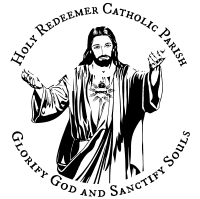The Eucharist, Part 8
Jesus Christ: Yesterday, Today, and Forever ~
Today we continue our twenty part series on the Eucharist. In case you missed the first three, you can find them here. This is in keeping with Archbishop Etienne’s pastoral letter on the Eucharist that you can find here (in case you missed it). Enjoy.
May God Bless You,
Fr. Thomas Nathe
Trent Horn, 20 Answers – The Eucharist. Catholic Answers Press. 2015
Get your own copy from Catholic.com
Question #8:
What did the early Church Fathers believe about the Eucharist?
Acts 2:42 tells us that the early Christians “devoted themselves to the apostles’ teaching and fellowship, to the breaking of bread and the prayers.” According to Protestant church historian J.N.D. Kelly, early Christians’ teaching on the Eucharist “was in general unquestioningly realist, i.e., the consecrated bread and wine were taken to be, and were treated and designated as, the Savior’s body and blood.” Anglican scholar Darwell Stone also makes the same point and says, “Throughout the writings of the Fathers there is unbroken agreement that the consecrated bread and wine are the body and blood of Christ, and that the Eucharist is a sacrifice.”
Here are just a few excerpts from the early Church Fathers that demonstrate their agreement on this issue:
St. Ignatius of Antioch, A.D. 110 – “[Heretics] abstain from the Eucharist and from prayer because they do not confess that the Eucharist is the flesh of our Savior Jesus Christ, flesh which suffered for our sins and which the Father, in his goodness, raised up again. They who deny the gift of God are perishing in their disputes.”
St. Justin Martyr, A.D. 151 – “As we have been taught, the food which has been made into the Eucharist by the eucharistic prayer set down by him, and by the change of which our blood and flesh is nurtured, is both the flesh and the blood of that incarnated Jesus.”
St. Irenaeus, A.D. 189 – “If the Lord were from other than the Father, how could he rightly take bread, which is of the same creation as our own, and confess it to be his body, and affirm that the mixture in the cup is his blood?”
Origen, A.D. 248 – “Formerly, in an obscure way, there was manna for food; now, however, in full view, there is the true food, the flesh of the Word of God, as he himself says: ‘My flesh is true food, and my blood is true drink’ [John 6:55].”
Despite the overwhelming evidence that there was unanimous belief among the Church Fathers that Christ is physically present in the Eucharist, some writers distort the historical record to suit their own agendas. Consider, for example, the writings of Bart Brewer. In his tract The Mystery of the Eucharist he claims, “The idea of a corporal presence [in the Eucharist] was vaguely held by some, as Ambrose.” But consider the following excerpt from Ambrose and ask yourself if Christ’s physical presence is only “vaguely held” in it:
“Why do you seek the order of nature in the Body of Christ, seeing that the Lord himself was born of a Virgin, not according to nature? It is the true Flesh of Christ which was crucified and buried, this is then truly the Sacrament of his Body [emphasis added].”
Other critics take out of context what the Fathers wrote in order to imply that some of them believed only in a symbolic presence of Christ in the Eucharist. For example, Protestant apologist William Webster says that the third-century Church Father Tertullian “spoke of the bread and wine in the Eucharist as symbols and figures which represent the body and blood of Christ. He specifically stated that these were not the literal body of the Lord.” Webster is appealing to this passage in Tertullian’s Against Marcion: “Then, having taken the bread and given it to his disciples, he made it his own body, by saying, “This is my body,’ that is, the figure of my body. A figure, however, there could not have been, unless there were first a veritable body.”
The problem with Webster’s interpretation is that Tertullian is attacking the heretic Marcion, who claimed that Christ was not actually human but had a phantom or unreal body. If this were the case, then the Eucharist could not be a sign of Christ’s body because Christ never had a body at all! When Church Fathers, like Tertullian, use words such as “sign” or “figure” they do not mean the Eucharist is only symbolic. As Kelly notes, “It must not be supposed, of course, that this ‘symbolical’ language implied that the bread and wine were regarded as mere pointers to, or tokens of, absent realities. Rather were they accepted as signs of realities which were somehow actually present though apprehended by faith alone.”
Webster himself admits that “As time passed clearer descriptions of the Eucharist as the transformation of the elements into the literal body and blood of Christ emerged in the writings of the Fathers such as Cyril of Jerusalem, Gregory Nyssa, Gregory Nazianzen, Chrysostom and Ambrose.”

